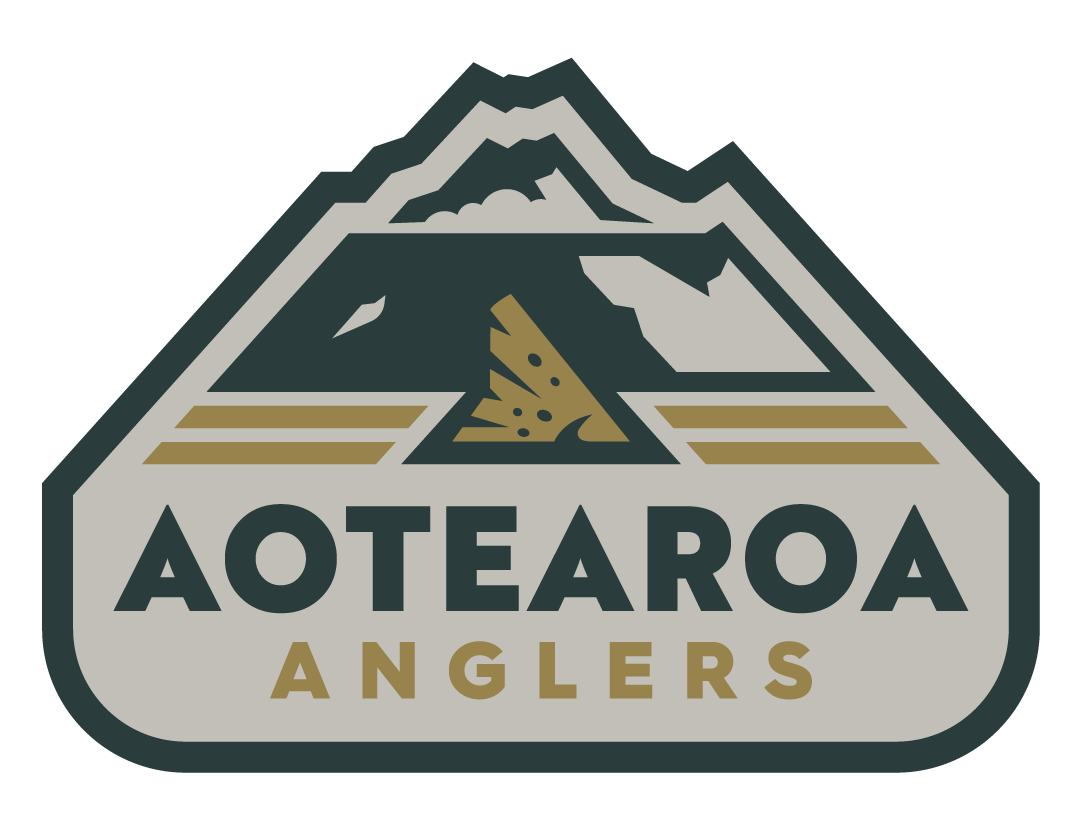
What to Expect?
New Zealand is a small island with big mountains in the depths of the south Pacific, consisting of a wide range of landscapes and climates. From the Southern Lakes district alone we are within just a couple of hours drive to the temperate rain forests of the Westcoast, the high mountain valleys and arid grasslands of Central Otago and the low country alluvial plains of Northern Southland. With this kind of diversity comes a huge variety of fishing options including the large glaciated lakes which the region is known for to small alpine tarns, spring creeks, willow lined streams, gorges and the quintessential braided rivers of the South Island.
The nature of a rugged island mountain scape resting on the southern 45th parallel lends itself to some pretty wild weather from time to time. It’s not unheard of to get a snowstorm in the high mountains during the height of summer if a southerly (directly from Antartica) system rolls across the island. The sailers of an early era dubbed these latitudes the roaring forties after the strong winds that the region is known for. While these winds were a major aid to these early seafarers they are less advantageous to the modern fly angler that is not used to them. However, we do maintain in NZ “the wind is your friend” as it’s often responsible for blowing clumsy insects onto the waters surface and undeniably gives wary trout an increased level of confidence when eating your fly. We do have our fair share of pleasant conditions too and often spend our summer days wandering up mountain rivers with the sun on our backs and free from the confines of waders.
The sum of all of this plus having a national population of about 4.8 million people (~1 million on the south island) equates to being the near perfect storm for trout habitat. New Zealand is recognised globally for producing some of the highest quality trout and trout fishing experiences available today.
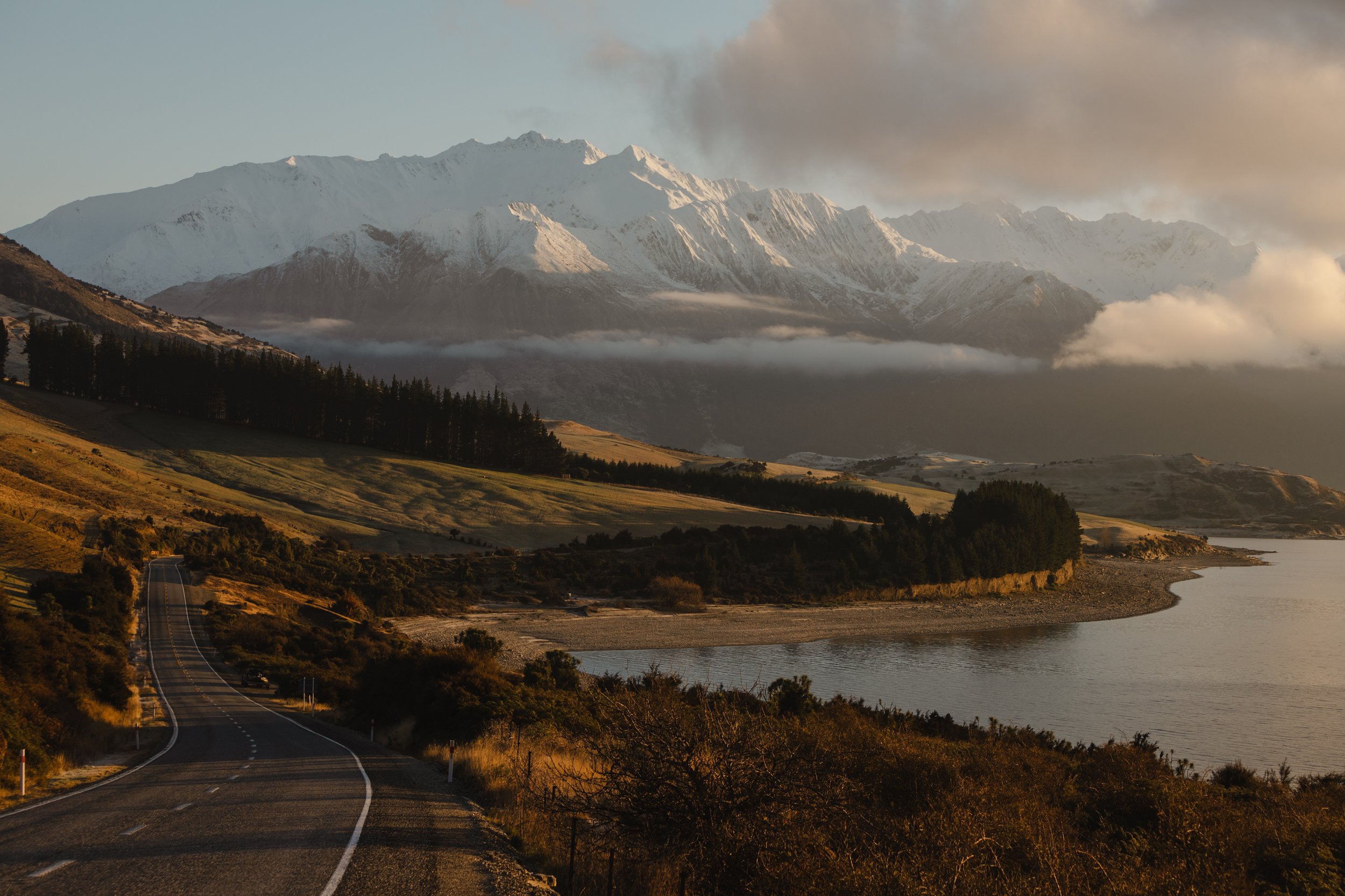
Getting Here.
New Zealand has five international airports which are serviced by most major carriers, including our own Internationally recognised Air New Zealand. You can fly into Auckland (AKL) or Wellington (WLG) on the North Island and Christchurch (CHC), Dunedin (DUD) or Queenstown (ZQN) on the South Island. If you are fishing with us in the Queenstown Wanaka region you’ll want to fly into Queenstown International. This is a very convenient route for travellers originating in Australia as there are many direct flights from most major Australian hubs.
There is a huge variety of options to get around in New Zealand once you land, from rental cars and camper vans to buses and private transport. Wanaka is about an hours drive from Queenstown.
If you do choose to drive yourself around there are some important things to remember. Firstly, stay left! We do drive on the left side of the road here in New Zealand. Also, allow more time than you may think to get around the islands. You will often be traveling on narrow two lane roads that meander through coastal and mountain terrain. Take your time and enjoy the ride!

The Fishing.
Like driving on the left side of the road it’s kind of Kiwi culture to add our own twist to things and trout fishing is certainly no exception. The approach that NZ is recognised for is sight fishing. We often start our day walking upstream looking for individual fish. Occasionally, we will throw out the odd blind cast in likely water but this depends on the river, anglers ability and the fishing on the day. New Zealand rivers often hold low density but high quality trout populations, this is particularly relevant in a backcountry type setting. When targeting large fish in these settings it would not be unusual to walk 1-2km in-between fish sightings. However, on our average day out you can expect to walk about 10 kilometres (6 miles) in total and see much higher numbers of fish.
You’ll often walk in stride with your guide and once a fish is spotted you will come up with a plan for that individual trout, which may be very different from the last fish or the next one. Sight fishing is not only a very exciting and engaging way to fish but it is a massive advantage in fly fishing as you are presented with all of the variables needed to make a successful presentation; depth, range, current speed and direction and trout activity and behaviour.
A stealthy approach is key as not unlike spotting the trout in our gin clear rivers, anglers are equally visible. It’s important to minimise any unnecessary movement and make your first cast count. While somedays it might seem like you can’t look at a fish without spooking it, other times it is not unusual to spend 30 minutes to an hour on an individual fish while trying to get the perfect drift with just the right fly. There is nothing more satisfying than when it all comes together!
Hooking them is only half of the battle! Fighting a large fish on light tippet, in heavy water is a skill in its own right. Staying as close to the fish as possible during the fight is the number one priority, this gives you maximum control and minimises line drag in the water. We often follow the fish up or down river during the first moments of the battle and before attempting to bring them to the net. Healthy New Zealand trout will often appear to be tiring and then make one or two more desperate runs as they near the guide, it’s important not to let your guard down in these final moments.
Once the trout is in the net we handle them with great care, snap a couple of photos and gently release them to fight another day. Although we do have the occasional blinder where fish just can’t seem to stay off of the hook, New Zealand is very much a quality over quantity fishery and that goes for the quality of the fish and the quality of the experience.
In our opinion, unlocking the challenges of sight fishing to large trout in crystal clear rivers and picture book backdrops is the holy grail of fly fishing.
The future of the fishery is one of our biggest priorities and for this reason we practice 100% catch and release at Aotearoa Angelrs.

The Tackle.
9 foot, 5-7 weight rods sporting a weight forward floating taper are the most common setups here in New Zealand. A faster action 6 weight such as the Scott Centric is a great all rounder for NZ conditions. Since there is such a variety of water and equal variety of techniques it’s good to have a range of rods capable of covering each scenario if possible. For example, a softer action 5wt like the Scott G series or the Radian for the calmer days fishing dry flies on small water and a faster action 6wt and 7wt like the Scott Centric or Sector for fishing bigger water, longer leaders and heavy nymph and streamer rigs. It is recommended to pair all of your rods with a quality smooth action reel such as the Hatch Gen 2 Finatic, 3 plus - 5 plus.
It is important to have an appropriate line to match your rods. Inspect your current lines for any signs of wear and tear and replace if necessary. On the lighter end (5wts) you’ll want a presentation taper for landing those dry flies as delicately as possible. When you move up to the 6 and 7wts. it does not hurt to have a marginally heavier more aggressive forward taper or even “up-lining” your rod, for example put a 7 weight line on your 6wt rod. This can help you turn over the long leaders that are required here in New Zealand and to cast large dry flies into a headwind and manage heavy nymph and streamer rigs.
We use long leaders to avoid spooking trout in the gin clear water that they inhabit. 9 times out of 10 if your fly line lands in front of the fish they will spook. You’re average trout leader around the world is about 9ft., in New Zealand a minimum of 12ft is required and we often sport leaders between 15-18ft. These are generally tapered down to a 3x or 4x tippet with a 6-8lb breaking strain.
Your guide will supply all flies that you require but it is encouraged to bring your own especially if you are a fly tier. Please keep in mind when tying your flies to tie them on quality, heavy gauge hooks such as the Kamasan b175.
Varieties and sizes of flies include:
May fly dries and nymphs, size 12-18.
Caddis fly dries and nymphs, size 10-16.
Stonefly and Creeper nymphs, size 6-12.
Hopper patterns, size 10-16.
Humpy and blowfly patterns, size 10-18.
Cicada patterns, size 10-16.
Stimulators, royal wulff etc., size 8-18.
Wooly buggers, size 4-8.
Weighted streamers, bully or sculpin immitations, 2-5inches.
Articulated streamers, 3-6inches.
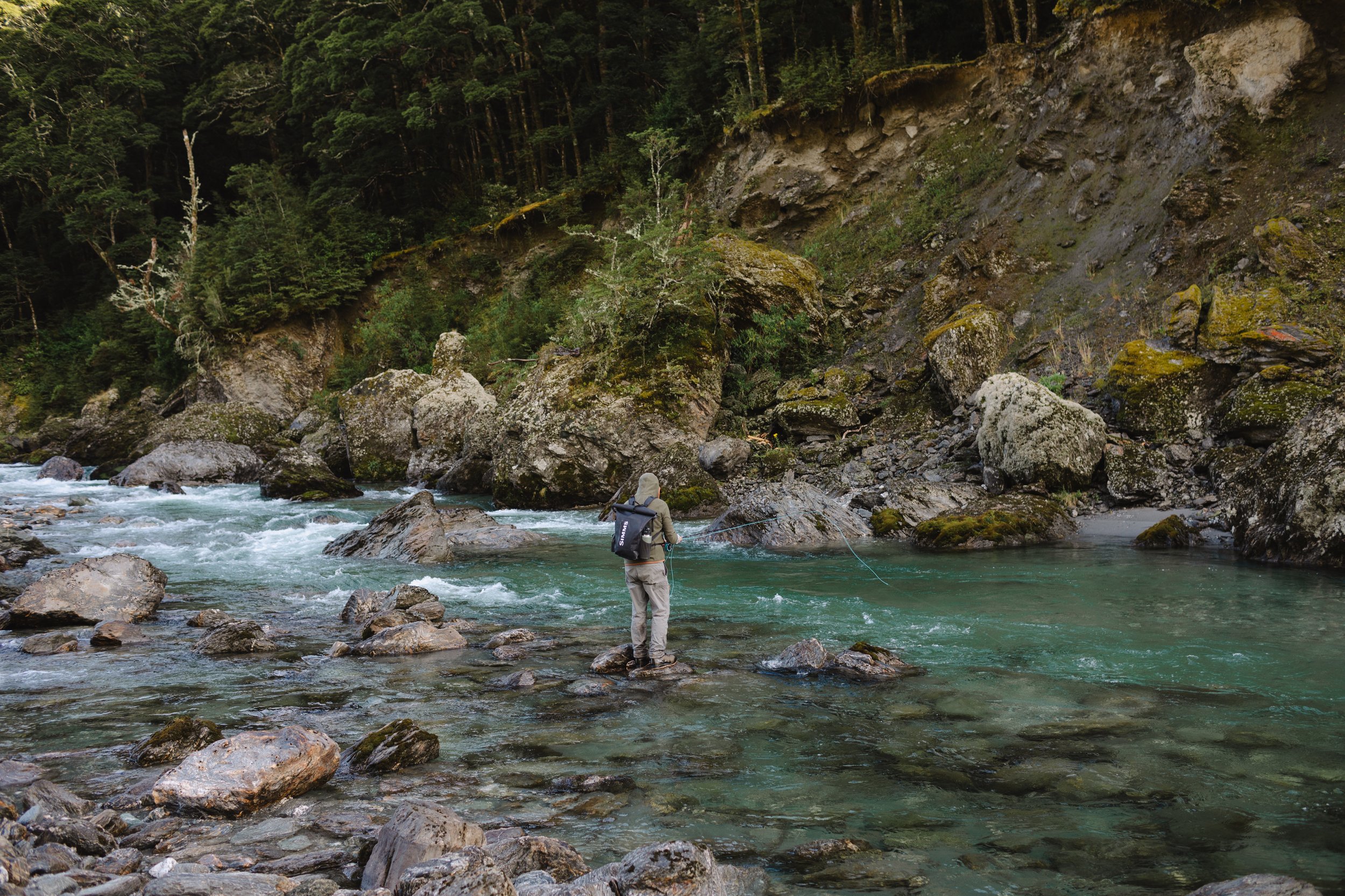
Prepare.
Preparing for your trip goes a long way to success and enjoyment on the water in New Zealand. Here are a few things you can do to better your odds.
Fitness: Be prepared to walk long distances each day during your stay. On average we cover about 10km or 6 miles a day and this is over rugged terrain and consists of many river crossings.
Casting: This is undeniably the most important. Get comfortable making accurate and consistent casts at 30-40ft. It’s a benefit to be able to make the occasional 50-70ft presentation too. Practice roll casts and off shoulder casts as you will inevitably be in a situation with an obstacle on your casting shoulder or in your back cast.
Get comfortable casting into the wind, how much wind you say? We’ll always do our best to avoid the wind on the day but the more wind you can handle the better! If we spend the whole trip running from the wind then you may not get to step foot on certain rivers.
Practice with long leaders, there is a big difference in comfortably making a 40 foot cast with a 9 foot leader and making that same cast with a 15 foot leader. There is an even bigger difference in making that cast into a headwind. Practice with real life variables in real life conditions.
Please note: These are simply guidelines for the average angler on the average trip. If you have physical limitations or are new to the sport we are happy to work with you to find a suitable and worthwhile option for you to enjoy a New Zealand fly fishing experience. We also understand that life is busy and it can be hard to find the time to practice your casting etc. we have successfully worked with anglers of all skill levels for many years now.
Our Home.
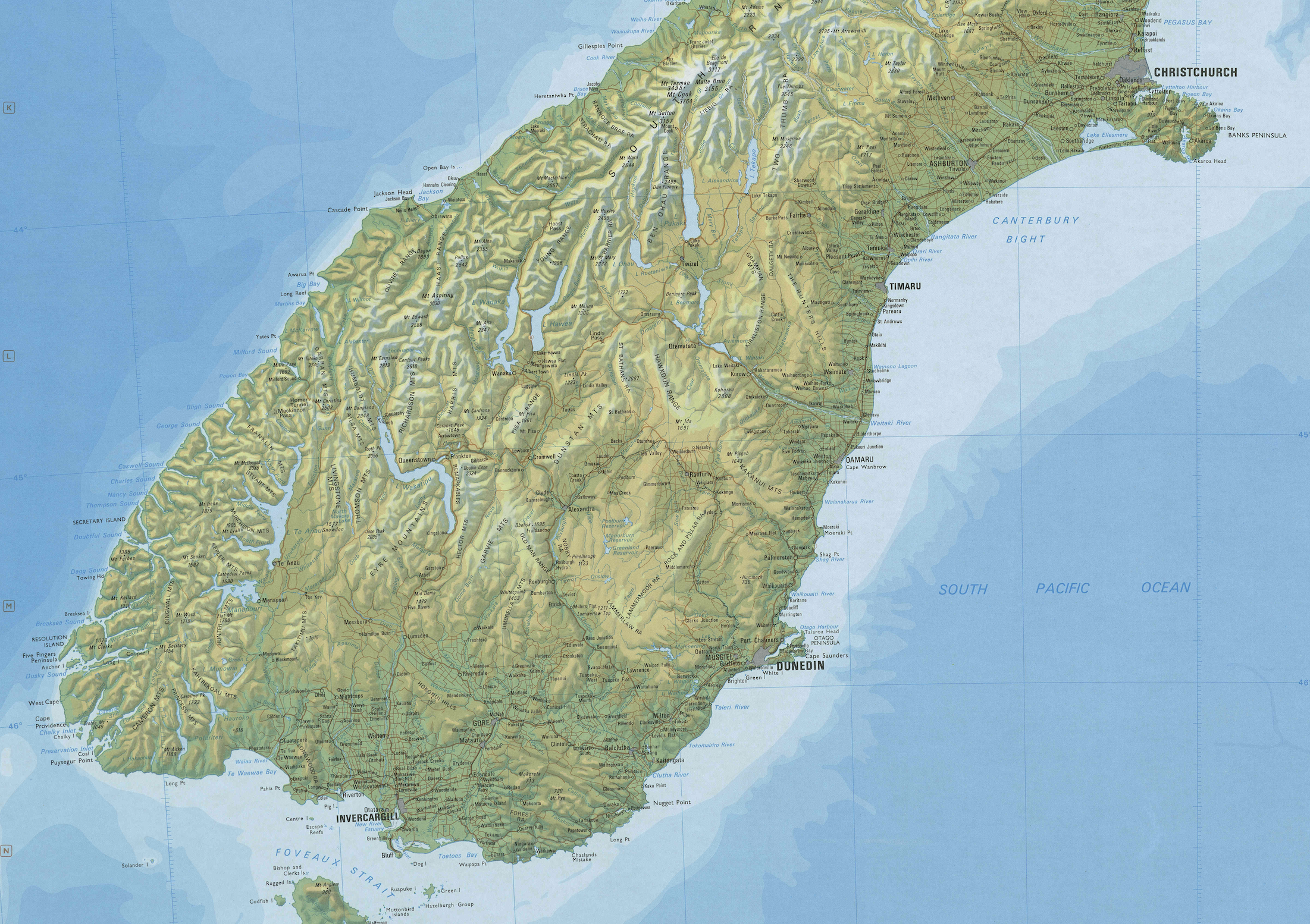
Aotearoa:
The Land of the Long White Cloud.
“The origin of this term sits in tribal narratives—and while interpretations differ, Polynesian explorer Kupe’s voyage of discovery is at its center. It is said that Kupe’s wife Hine te apārangi first spotted signs of land when arriving in New Zealand for the first time, crying out “He ao! He ao! He ao tea roa!” meaning, ‘A cloud! A cloud! A long white cloud!’ As an expert navigator herself, Hine te Apārangi knew that such a cloud formation heralds land underneath. So became the Land of the Long White Cloud—Aotearoa.”
Is Aotearoa home to the best trout fishery in the world? We certainly think so but why don’t you come fish with us and find out for yourself?
The Seasons.
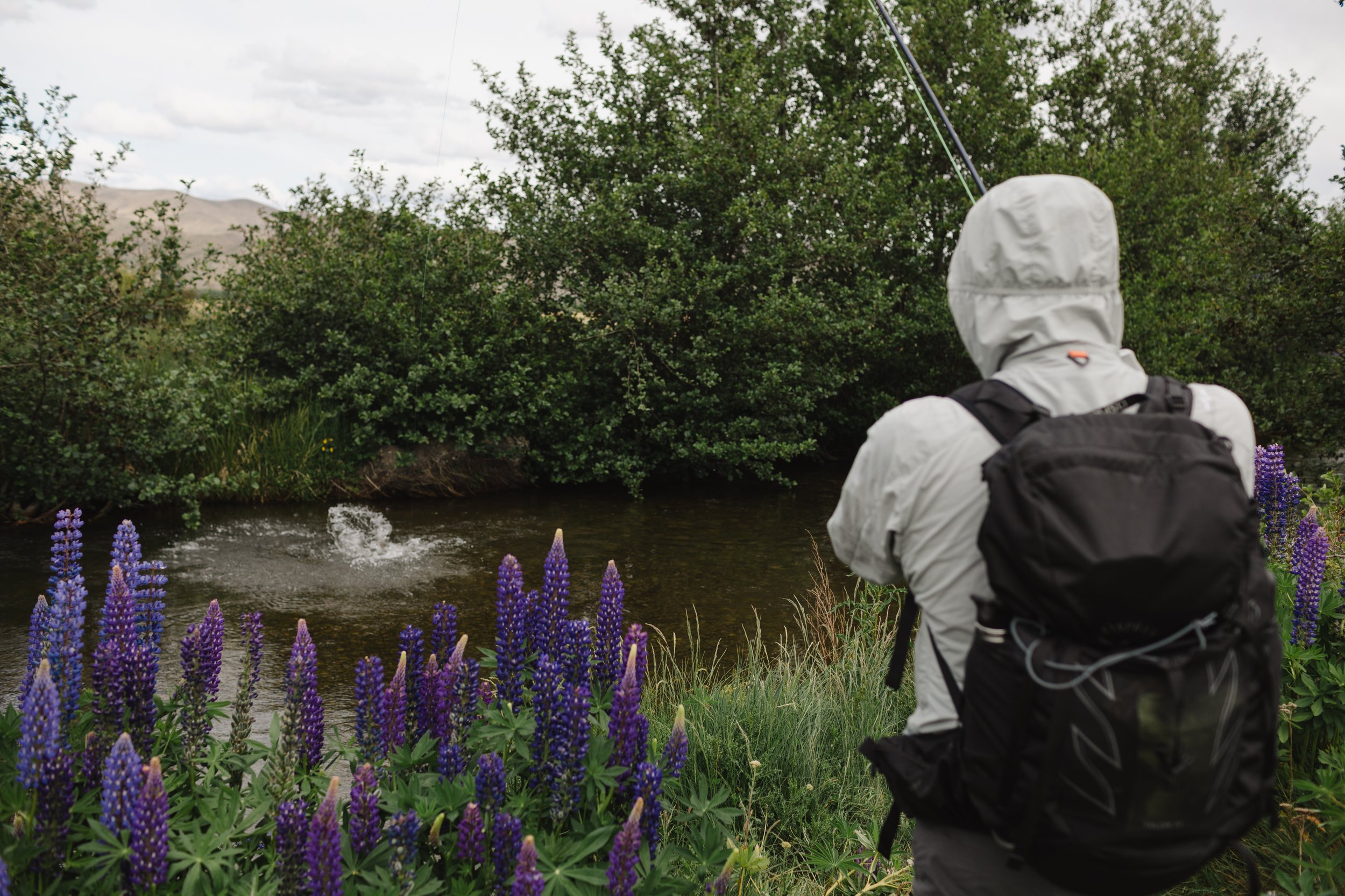
Spring.
September-November. Many of our brown trout fisheries open on the first of October each year. Followed by what is know as the “high country opener” during the first week of November. The high country opener often marks the start of the season on rivers that have large populations of rainbow trout which are spring spawners.
Spring is a time of renewal and this goes for the fishing as well. The trout have had months off from angling pressure and have typically finished their annual spawning cycle. The rivers are often full from the trickle effect of the snow pack melting off. This can give you a distinct advantage when fly fishing for wary NZ trout. We fish a variety of techniques this time of year but nymphing is a typical and productive approach. Some small streams will experience a nice mayfly hatch which rivals even the hatches during the autumn months. Another similarity to the autumn months is the productive streamer bite - this is one of our favourite times to drift fish from our rafts.
Like spring in most places the weather can be fickle and the start of the nor’wester (NZ’s prevailing winds) is invariably during these early spring months. Spring is an excellent time of year to fish the South Island, crowds are minimal and the trout are plentiful and as relaxed as they will be all season.

Summer.
December - February. By December the focus begins to switch from standard river fodder such as mayfly and caddis to the abundant terrestrial insects that inhabit the river valleys of New Zealand’s South Island. Beetles, small hopers, blowflies and the main event…. cicadas!
The days are their longest and the rivers are their lowest. It’s what we call brochure fly fishing. But don’t be fooled, trout become increasingly wary in low and clear conditions and require a stealthy and accurate approach….just look at the guy in the tree in this photo. But when it all comes together and that big brown trout that’s been minding its own business on the edge all day begins the ascent to eat your size 10 humpy it feels like the whole world has come to a screeching halt. Just don’t blow the hook set!

Autumn.
March-May. The wind down. This is a pleasant time of year and in our opinion the most underrated of the entire season. The shorter days and cooler temps signal another change in our angling calendar which is always a positive. Fish begin to start moving back into the smaller streams and tributaries from the lakes and larger waterways. The cooler temperatures trigger some of the most prolific mayfly hatches of the season. Fishing meandering low country streams while anticipating the the afternoon hatch is a highlight of the autumn season. On the contrary to delicate dry flies, streamers are very much on the menu this time of year so it’s a great time to get in the raft and drif fish our south island rivers. Autumn aggression is un matched and the stunning autumn colours of central Otago just add to the experience.

Winter.
June-August. What off season? Although the end of April marks the closing day of many lowland streams and May 31st the closing of the high country in Otago this is still New Zealand and there is always somewhere to target trout. Come winter we start to get pretty serious about our drift fishing program, targeting the migratory runs of brown and rainbow trout in the upper Clutha basin. This is arguably one of our favourite times of the year to fish these systems. The winter is also an excellent time of year to break out the double hand rods, work on your nymphing techniques and single hand streamer tactics. In the Wanaka and Queenstown areas we are lucky to have some great winter options from large rivers to quality lake edge fishing.
